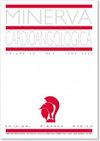一项随机试验的血流介导的扩张,以防止桡动脉痉挛在经桡动脉入路。
Q3 Medicine
引用次数: 3
摘要
尽管经皮冠状动脉介入治疗越来越多地采用经桡动脉入路,但桡动脉痉挛(RAS)仍然是主要的缺点之一。血流介导扩张(FMD)是一种众所周知的通过扩张来评估内皮功能的方法。本研究的目的是探讨经桡动脉入路时穿刺前血流介导的扩张在预防RAS中的作用。方法前瞻性研究纳入222例连续行经桡动脉冠状动脉介入治疗的患者。患者按1:1随机分为两组,分别为FMD[+]和FMD[-]。结果FMD[+]组RAS发生率较低(5.4% vs 16.2%, p=0.009)。多因素logistic回归分析显示,女性、使用两次以上导管和经桡动脉入路未穿刺FMD独立预测RAS(比值比(OR): 4.66, 95%可信区间[CI]: 1.8-12.06, p=0.001, OR: 5.73, 95%CI: 2.01-16.39, p=0.001, OR: 5.01, 95%CI: 1.74-14.48, p=0.003;分别)。但两组间接入点交叉数均极低,组间无差异。结论经桡动脉冠状动脉介入治疗中,经穿刺FMD可显著降低RAS。因此,穿刺口蹄疫可作为预防RAS的一种简单的辅助方法。本文章由计算机程序翻译,如有差异,请以英文原文为准。
A randomized trial of flow-mediated dilation to prevent radial artery spasm during transradial approach.
BACKGROUND
Although transradial approach has been increasingly preferred for percutaneous coronary interventions, radial artery spasm (RAS) is still one of the major disadvantage. Flow-mediated dilation (FMD) is a well-known method for assessing endothelial function through dilation. The aim of this study was to investigate the efficacy of prepuncture flow mediated dilation in preventing RAS during transradial approach.
METHODS
The present study prospectively included 222 consecutive patients who underwent transradial coronary intervention. Patients were 1:1 randomized into two groups who underwent prepuncture FMD and who did not (FMD [+] and FMD [-], respectively).
RESULTS
In FMD [+] group the incidence of RAS was lower (5.4% vs 16.2%, p=0.009). Multivariate logistic regression analysis demonstrated that female sex, more than two catheter usage and transradial approach without prepuncture FMD independently predicted RAS (odds ratio (OR): 4.66, 95% confidence interval [CI]: 1.8-12.06, p=0.001, OR: 5.73, 95%CI: 2.01-16.39, p=0.001, and OR: 5.01, 95% CI: 1.74-14.48, p=0.003; respectively). However, access site crossover number was very low in both groups and not different between groups.
CONCLUSIONS
Prepuncture FMD can significantly reduce RAS during transradial coronary interventions. Thus, prepuncture FMD can be used as a simple adjunctive method to prevent RAS.
求助全文
通过发布文献求助,成功后即可免费获取论文全文。
去求助
来源期刊

Minerva cardioangiologica
CARDIAC & CARDIOVASCULAR SYSTEMS-
CiteScore
1.60
自引率
0.00%
发文量
0
审稿时长
>12 weeks
期刊介绍:
A Journal on Heart and Vascular Diseases.
 求助内容:
求助内容: 应助结果提醒方式:
应助结果提醒方式:


